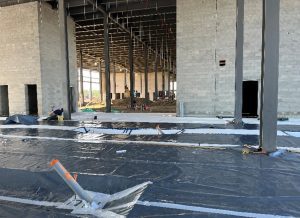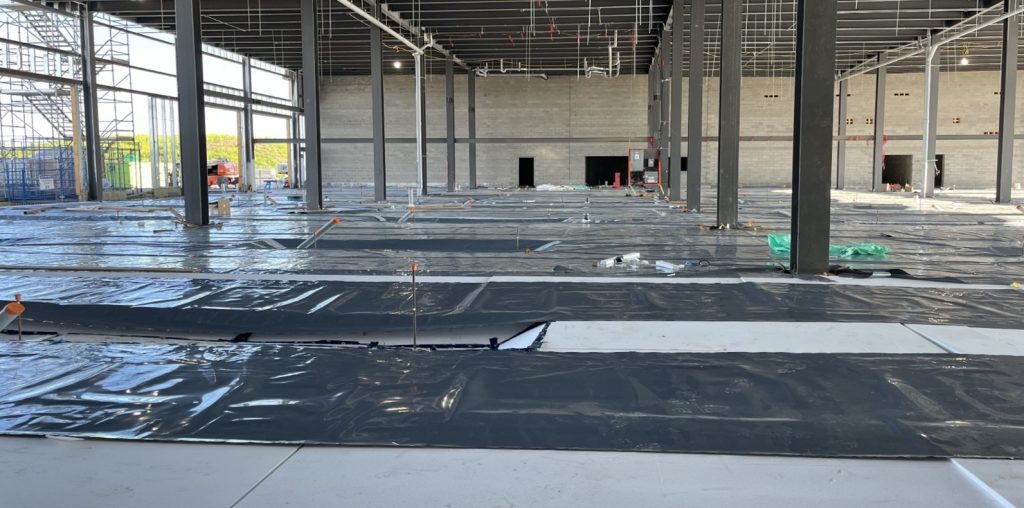PROJECT SUMMARY
During the construction of a commercial building in Edmonton, AB, the contractor recognized the importance of protecting the structure from moisture migration and harmful gas infiltration—key factors in ensuring long-term durability, superior indoor air quality, and high energy efficiency. To address these concerns, a high-performance vapor barrier was required during the sub-slab preparation phase to mitigate the risk of infiltration prior to concrete placement.
SOLUTION
Layfield’s VaporFlex® Standard 15 mil vapor barrier was selected for its proven reliability and exceptional performance. Known for its superior resistance to moisture, gases, microbial intrusion, and other environmental challenges, VaporFlex® formed a continuous protective layer beneath the slab. Its robust design meets stringent building performance standards, making it the ideal solution for this commercial application.
With rising insurance costs, growing health concerns, and significant liabilities associated with mold in residential and commercial buildings, the American Society for Testing and Materials (ASTM) recognized the need for standardized vapor barrier performance. This led to the establishment of ASTM E1745, a benchmark specification for vapor barriers used by architects and engineers. Layfield’s VaporFlex® Standard exceeds the requirements of ASTM E1745 for a Class A vapor barrier—the highest level of performance. While selecting a superior barrier is essential, the true challenge lies in ensuring proper installation to maximize its effectiveness and long-term protection.
CHALLENGES & RESULTS


The installation required careful attention to detail due to the presence of various penetrations, including pipe sleeves and structural columns. Maintaining barrier integrity around these obstacles involved precise cutting and sealing. To support this, Layfield-compatible tape was used for the installation to ensure strong, reliable seams.
To further enhance seal reliability, the contractor applied a commercial-grade sealant over all joints prior to taping. While Layfield supported this proactive approach, the introduction of a new component required rapid evaluation. Layfield expedited the qualification process, testing the sealant at its Edmonton laboratory to confirm its compatibility and effectiveness. The sealant was validated for use and performed well throughout the project after successful results.
After installation, a thorough smoke test was conducted to verify the integrity of the vapor barrier. This final quality assurance step helped identify minor leaks caused by joint failures or incidental punctures, which were promptly repaired prior to concrete placement. The success of this project was the result of close collaboration between the contractor and Layfield’s technical team. Together, we overcame installation challenges and delivered a high-performance vapor barrier system that will provide years of dependable service, supporting the building’s goals for durability, indoor air quality, and energy efficiency.
